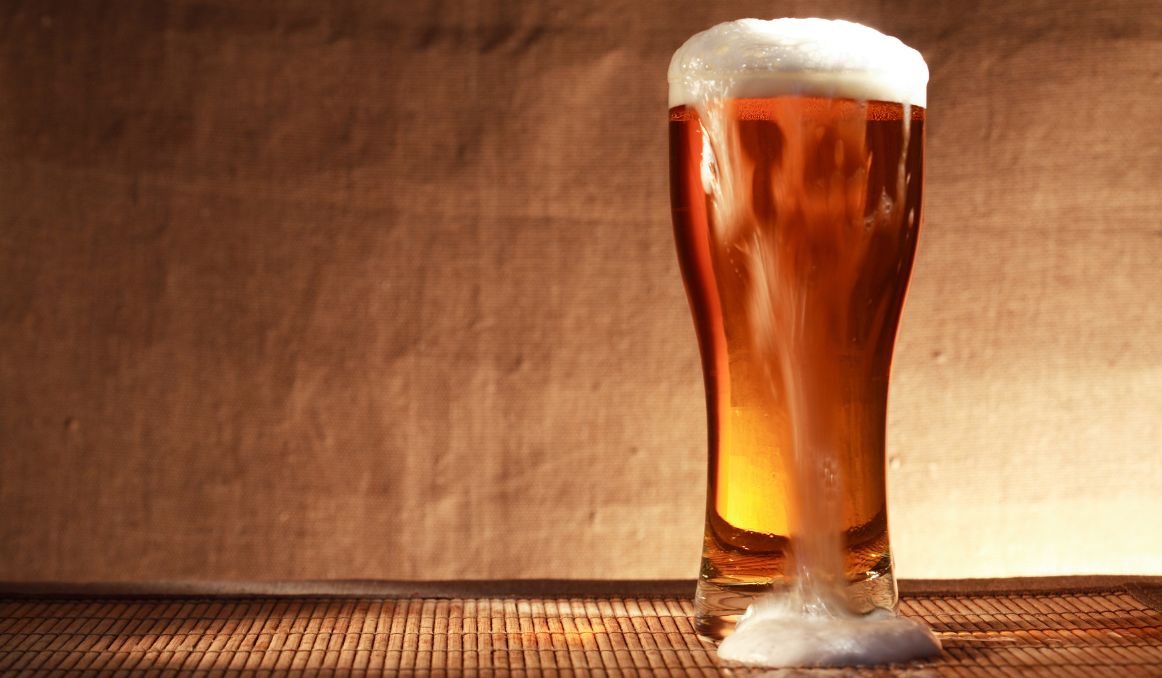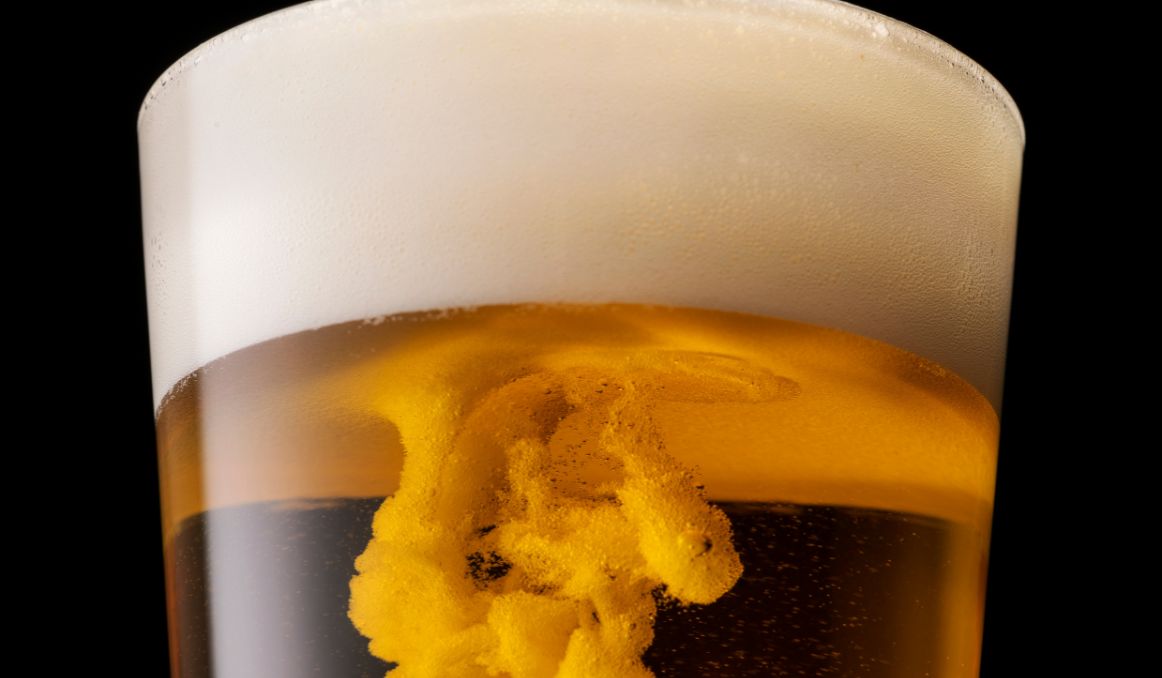How to Get Good Head Retention in Beer
Head on beer is a big issue for beer drinkers, so figuring out how to get good head retention in beer must likewise be a big issue for brewers.
First, the question of what creates head must be answered.
Then, we can work backwards to discover ways to get good head retention for our clientele.
What Is Head in Beer?

Head on beer is that foamy top that consists of carbon dioxide and proteins in the beer.
But it is so much more than just “bubbles.”
A well-maintained head on beer traps the carbon dioxide inside the actual liquid part of the beer and prevents the beer from going flat, ensuring you get proper effervescence each time you take a drink of your beer until it is done.
A beer with a poorly maintained head, i.e. one that dissipates almost immediately, will also go flat relatively quickly, ruining the overall effect.
Head on beer also contributes greatly to the aroma and flavor of the beer, contributing enormously to the initial presentation and overall performance of the beer in general. Basically, a beer with great head stands to be pleasing on all levels to the drinker in contrast to a beer with no head or quickly dissipating head.
Head contributes to mouthfeel of beer as well, ensuring that as you take each drink, the beer tastes balanced and well developed rather than flat, overly sour, too creamy, etc.
Ultimately, great head on beer is critical to the production of great beer.
What Makes Head in Beer?
There are several factors that contribute to head in beer, from proteins to yeast, hops, and even heading agents.
It is also important to note that the same factors that contribute to a frothy, foamy head in beer also contribute to cloudiness and haze in beers, so it pays to be mindful of striking the right balance between the two.
Protein
Proteins in beer are likely the greatest factor in the creation of head in beer.
Barley and wheat grains are high in protein, which is why you will see most wheat beers tend to be both cloudy and head heavy.
Likewise with oat stouts, where the beer often cascades in haziness and foam that seems never ending, so it must be poured precisely in order to balance beer and foam.
In contrast, beers with high rice or corn content tend to require additional help to create head as those grains are very low in protein.
Yeast
Yeast contributes to the formation and retention of head in another way, through the production of carbon dioxide.
Indeed, yeast has only this one job, to consume the sugars provided by the grains in wort and to convert those sugars into alcohol and carbon dioxide.
So, it can be said that while yeast creates head, protein retains it. And you really do need both.
Hops
And a still additional aid in beer head retention is the hop flower used as a bittering agent in beer.
The bitter substance in hops called isohumulones is a form of alpha acid that helps hold those bubbles together.
Hops then come in to assist the proteins in the beer that retain the foam created by the yeast.
Like one big happy foamy family.
Heading Agents
Of course, these days, there are additives for everything.
In wine, you can add sulfites as a preservative.
In beer, you can add heading agents to retain head.
But, if you follow proper, ancient practices, you don’t need those heading agents.
Typically, heading agents, which can include protein enzymes called pepsin found in pork, iron salts, gums, and alginates, are only necessary for large commercial beers that are made using corn or rice, grains that are super low in proteins.
In short, some large brewing corporations save money on beer production by using corn or rice, cheap grains, to make beer, then they add heading agents to create and retain foam.
So you’re not really getting the tried-and-true beer our ancestors have long been making, packed with nutrients and probiotics.
You’re getting a highly processed byproduct packed with chemicals and additives.
Large and small brewers can avoid this reality and better serve their clientele by simply choosing a more beer friendly grain like wheat, barley, or oats.
How to Get Good Head Retention in Beer

In addition to using high protein grains, yeast, and hops in your wort to retain good head in your beer, there are a few other factors to be aware of.
Mashing Process
Believe it or not, your mashing schedule can greatly affect the head on your beer. Remember, the higher the protein, the better, when it comes to head, so any part of the brewing process that breaks down those proteins will lead to poor head retention.
Thus, your mashing schedule should aim for a higher heat, between 155- and 160-degrees Fahrenheit, for a shorter period of time, avoiding intermediate protein rest periods.
Watch Soap and Dirt
Furthermore, excess oil or dirt, as well as the use of traditional soaps in glassware can have a huge impact on the head in your beer.
Dish soaps, when not rinsed away completely from glassware, including your bottles, can cut down those bubbles quickly, and any dirt or grime not completely washed and rinsed away can also influence the production of bubbles and foam and their retention in your beer glass.
So brewers and bartenders alike must be sure that all glassware is not only fully cleaned and sanitized but also fully rinsed and dried in order to get and retain proper head on all poured beers.
Glassware
And finally, proper glassware can affect head retention.
Wider, shorter glasses will encourage the dissipation of the head, which is why we see so many classic beer glasses are taller with narrow bases and wider mouths.
It pays to be mindful of all the factors in both the production of and the retention of good head in beer, so your loyal customers will continue to rave about your brew for generations to come.
Cheers!
Passionate about the beer and/or wine making process? So are we! If you’re interested in finding out how you can use our technology to control fermentation and monitor your yeast, save work hours and improve the cost-efficiency of your business, drop us a line at [email protected] or check out our product pages:
- Oculyze BB 2.0 (Better Brewing) Yeast Cell Counter App + Hardware
- Oculyze FW (Fermentation Wine) Yeast Cell Counter App + Hardware
Also, you can now get access to a fully functional demo account to test your yeast via our Web App. Completely free of charge and with no commitment to purchase.
Sources:
- https://beersmith.com/blog/2008/06/25/enhancing-beer-head-retention-for-home-brewers/
- https://www.homebrewersassociation.org/how-to-brew/secrets-better-beer-foam/


